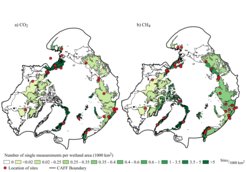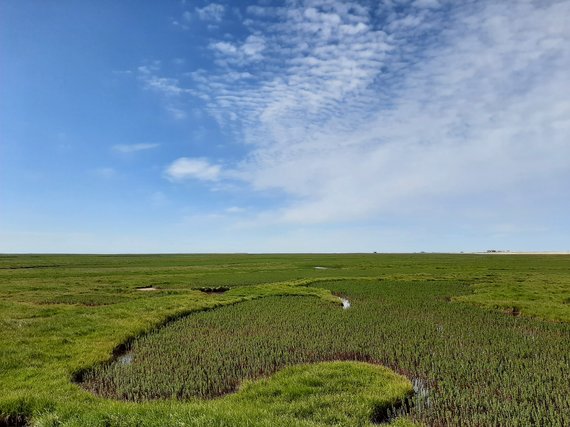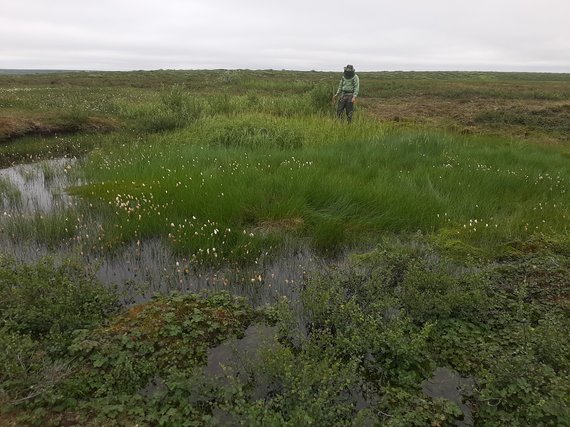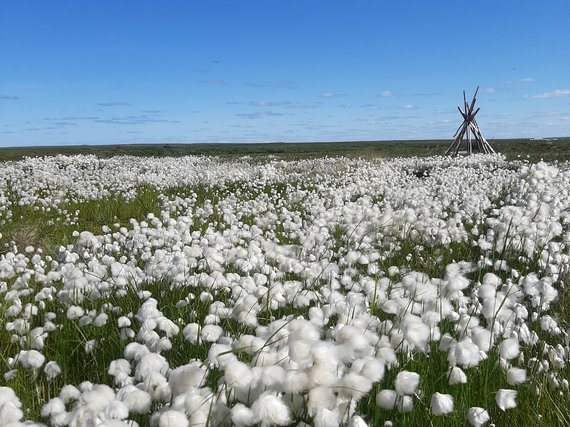Optimizing the classification scheme for Arctic wetlands to better understand their role in the Arctic carbon budget
Lead: Kseniia Ivanova
Optimizing the classification scheme for Arctic wetlands to better understand their role in the Arctic carbon budget
Wetlands play a key role in maintaining the balance of the Arctic carbon budget. There are different types of wetlands, each with individual physical characteristics, such as hydrology and vegetation, pH or peat type, which determine their feedback with the climate and the exchange of greenhouse gases. Based on biogeographic classifications, at least ten different wetland types can be distinguished in the high northern latitudes.
Despite this great variability in wetland characteristics, most land surface models distinguish only a few Arctic wetland types, sometimes only one. This is due to the fact that information on Arctic wetlands is very scarce and there is little data to calibrate models against. To effectively represent the contribution of wetlands to the Arctic carbon cycle in these models, it is therefore important to find a balance between taking into account the diversity of wetlands, their different roles in the carbon balance and the information that is readily available.
To improve this situation, this project aims to develop new wetland classifications that reflect a compromise between the variability of Arctic wetland carbon cycle processes and the information covering key environmental parameters, in order to facilitate the representation of these wetlands in land surface models. For this purpose, a database was created using published research on Arctic wetlands, covering carbon pools and fluxes from 1988 to 2023. The dataset contains a total of 840 observations from 82 published studies and 1 unpublished field campaign. The primary method of data collection was flux chamber techniques, with some eddy covariance measurements also included. The database includes information on study site characteristics, wetland information, coil and vegetation characteristics, and CH4 and CO2 fluxes. However, for some of the important control parameters, such as permafrost depth, pH and groundwater level, there is little data available across the network of sites. To address this, remotely sensed data have also been included, although they are often less accurate.

Key factors for wetland classification were selected:
1. CH4 or CO2 flux (separately)
2. NDVI (Normalised Difference Vegetation Index) to reflect vegetation.
3. Potential peat depth to reflect soil conditions
4. Snow season length, growing degree days and annual precipitation as climate parameters
5. Moisture levels based on the vegetation composition of each measurement site
As a result, there are distinct clusters of wetlands that show significant differences not only in GHG fluxes but also in other ecological parameters, although the number of clusters remains small (4 clusters for CO2 and 5 for CH4).



